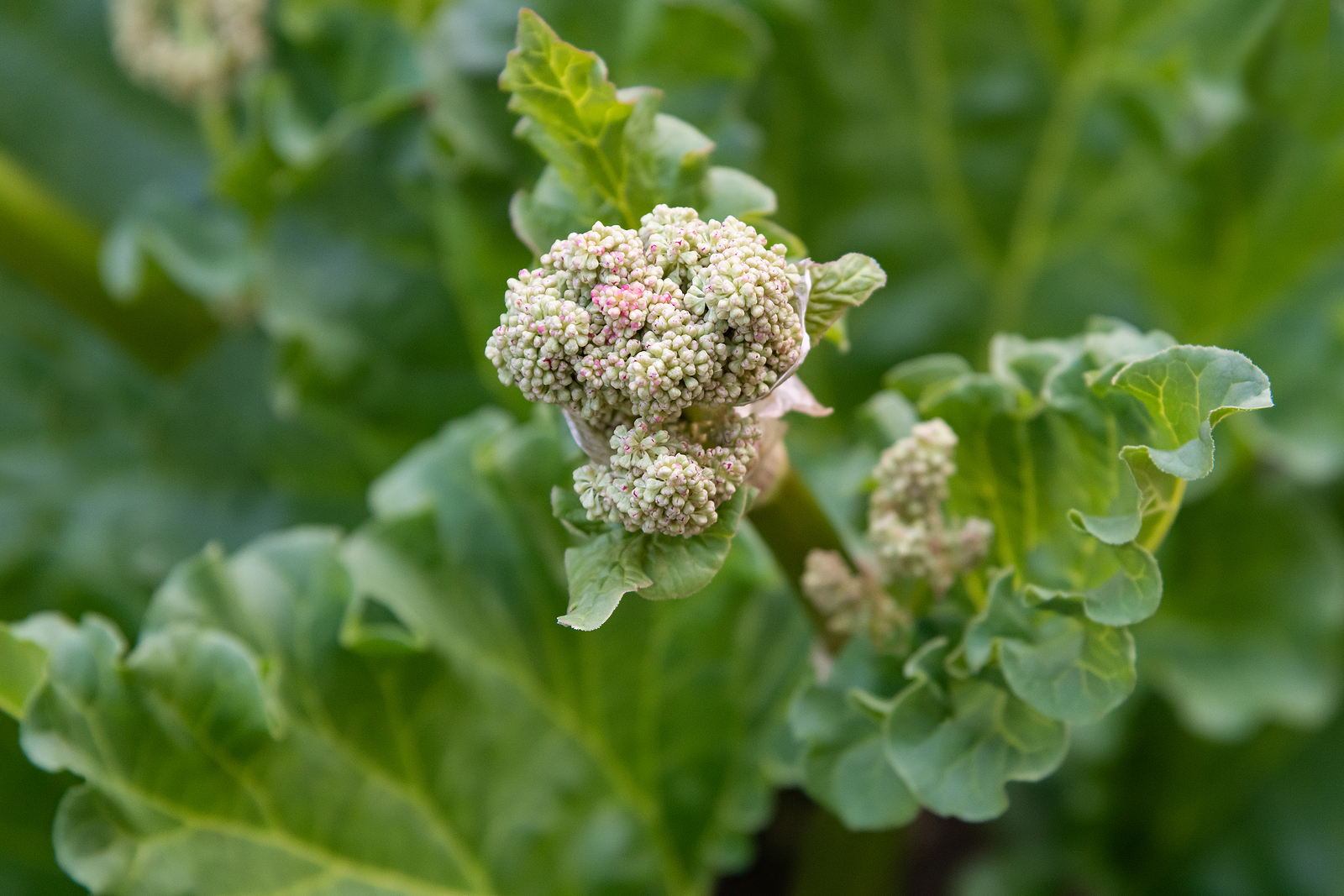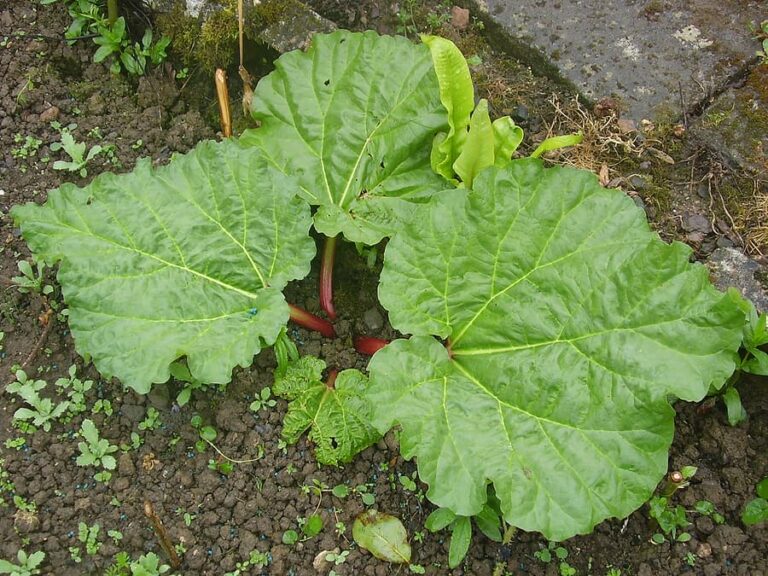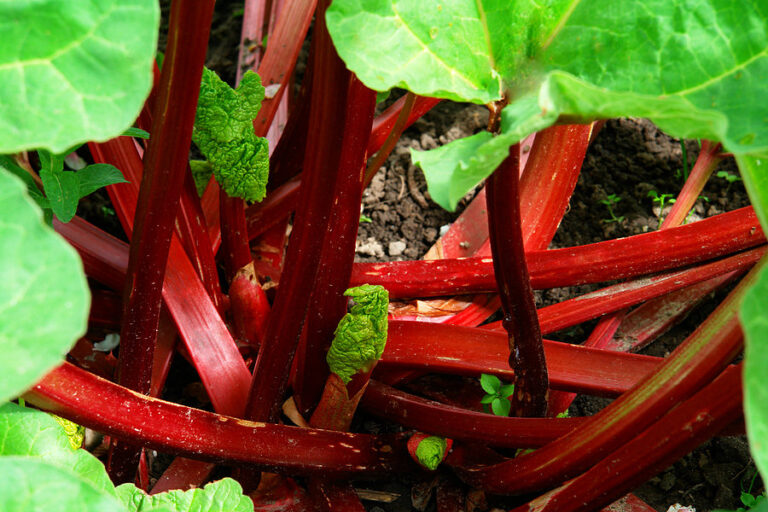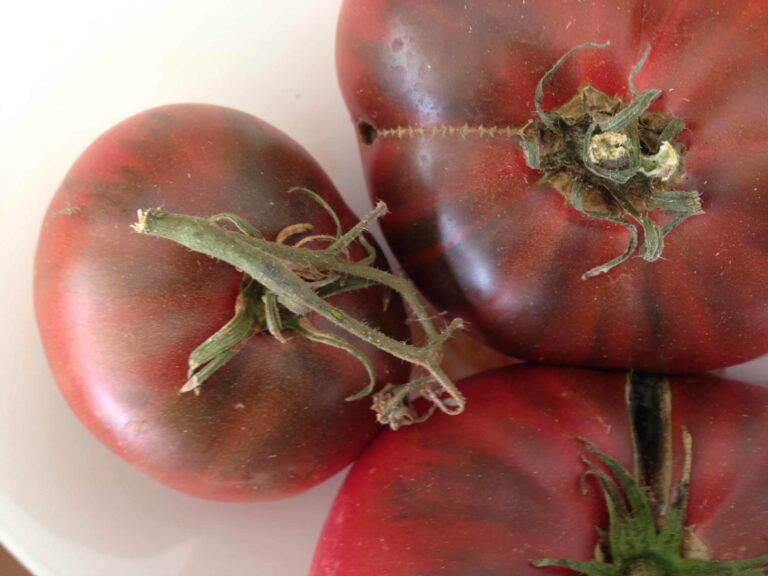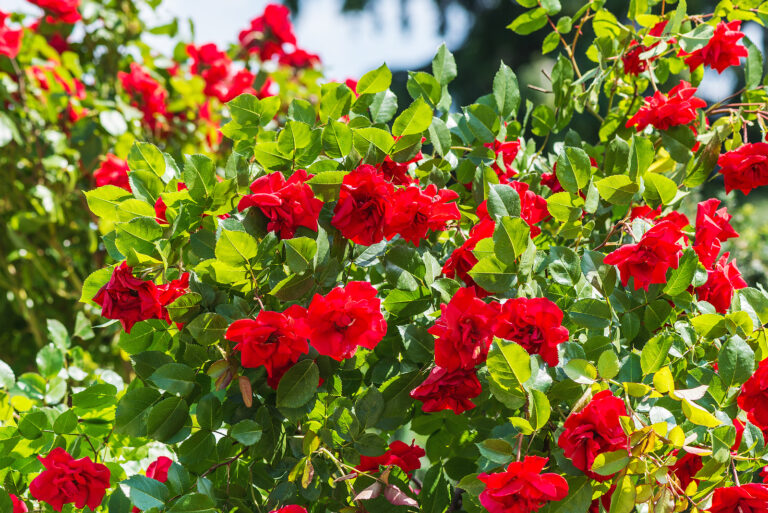How to Grow Rheum – Rhubarb
Rheum – commonly called Rhubarb–bears big, elongated, heart-shaped, crinkled leaves and red-tinted leafstalks. Towering panicles of petalless flowers appear above the leaves in summer. There are about 50 species of Rheum; some are ornamental and some bear edible leaf stalks though the leaves are poisonous.
Many members of the Rheum genus are grown for their large imposing basal leaves and tall flower panicles; some grow to as tall as 10 feet (3m); a few are dwarf with small flower spikes. The panicles of tiny, petalless, star-shaped flowers are borne on hollow, leafless stems in summer.
Rheum is best grown in moist, well-drained, humus-rich soil. It can be grown near water or in moist borders or woodland gardens.
The leaves of Rheum can cause severe discomfort if eaten.
Get to know Rheum
- Plant type: Rhizomatous perennial
- Growing zones and range: Zones 5 to 9
- Hardiness: Hardy to Zone 5
- Height and width: 4 to 8 feet (1.2-2.4m) tall and 2 to 6 feet (61cm-1.8m) wide depending on the variety
- Growth rate: Moderate
- Form and habit: Upright, open, and spreading
- Foliage: Imposing, large, basal leaves; the rounded, entire to palmately lobed leaves from bright red buds that are sometimes crimson-purple when young, usually with coarse teeth and conspicuous veins and midribs
- Flowers: Tall flower panicles; tiny, petalless, star-shaped flowers are borne on hollow, leafless, flowering stems; some species have large, colorful bracts
- Fruits: Small, triangular, winged, usually brown fruits
- Bloom time: Summer
- Uses: Near water, moist border, woodland garden, accent
- Garden companions: Fine-textured perennials, such as astilbe
- Common name: Rhubarb
- Botanical name: Rheum
- Family name: Polygonaceae
- Origin: Eastern Europe and Central Asia to the Himalayas and China

Where to plant Rheum
- Plant Rheum in full sun or partial shade; plants do not tolerate drought or heat.
- Plant Rheum in deep, moist, humus-rich soil; mulch annually in early spring with well-rotted organic matter.
When to plant Rheum
- Sow Rheum seed in containers in a cold frame in autumn.
- Set container-grown Rheum in the garden in spring or autumn.
Planting and spacing Rheum
- Space Rheum 5 feet (1.5m) apart.
How to water and feed Rheum
- Water Rheum deeply during dry weather.
- Feed Rheum with an all-purpose organic fertilizer in spring.
How to care for Rheum
- Cut Rheum bloom stalks to the ground after the flowers fade.
Rheum pests and diseases
- Rheum can develop root rot, rust, crown rot (sore shin), and Southern blight.
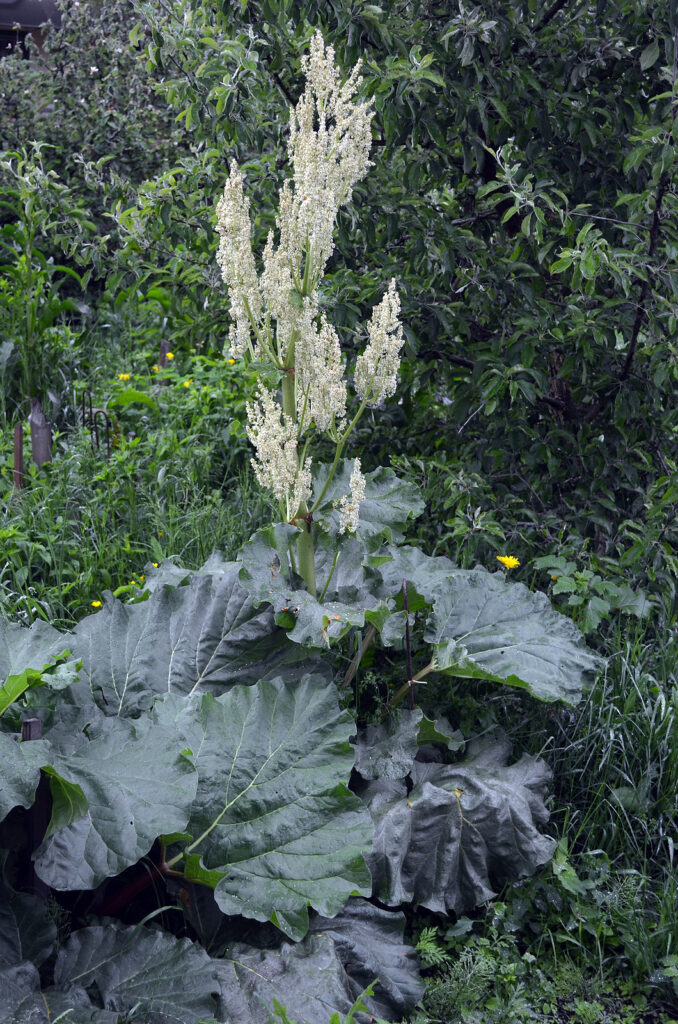
Rheum propagation
- Divide Rheum by separating the clumps in early spring or severing small offsets that appear around the outside of the clumps.
Rheum varieties to grow
- Rheum acuminatum, Ornamental rhubarb, growing in or near water, with heavily veined leaves, rich red petioles and upright, branches and spidery stems, or red flowers. Red seed pods are borne in summer. Adaptive to full sun or partial shade in rich, humusy soil. After flowering cut back to rejuvenate foliage for the remaining season. Offers excellent autumn tones of red in full sun. To 4 feet (1.2m) tall.
- R. emodii, Himalayan rhubarb, Red-veined pie plant, rhizomatous perennial with rounded to broadly ovate, wavy-margined, mid-green leaves, 16-30 inches (40-75cm) long, of numerous tiny, star-shaped white to wine-red flowers on branching stems. To 10 feet (3m) tall and 6-8 feet (2-2.5m). Himalayas.
- P. palmatum, Chinese rhubarb, rhizomatous perennial with a massive roostock and thick leaf stalks that bear broadly ovate to rounded, palmately 3- to 9-lobed, coarsely toothed, dark green leaves, to 36 inches (90cm) long, purple-red or red and softly hairy beneath. In early summer, numerous tiny, star-shaped, creamy green to deep red flowers are borne in panicles, to 6 feet (2m) long. To 8 feet (2.5m) tall and 6 feet (1.8m) wide. Northwest China, Northeast Tibet.
- R. rhubarbarum, Rhubarb, Pieplant, strong perennial, with thick clustered roots and blunt, smooth leaves. Large, thick roots run deep into the ground, and are reddish-brown outside and yellow within. Stems are 2-3 feet (.6-1m) high, jointed and purplish. The flowers are white. Succulent, red-colored petioles, to 18 inches (45cm) long and .5 inch (1.5cm) in diameter, are edible. Leaf blades are up to 1 foot (30cm) or more in width and length and may be toxic if ingested. To 4 feet (1.2m) tall and wide.

